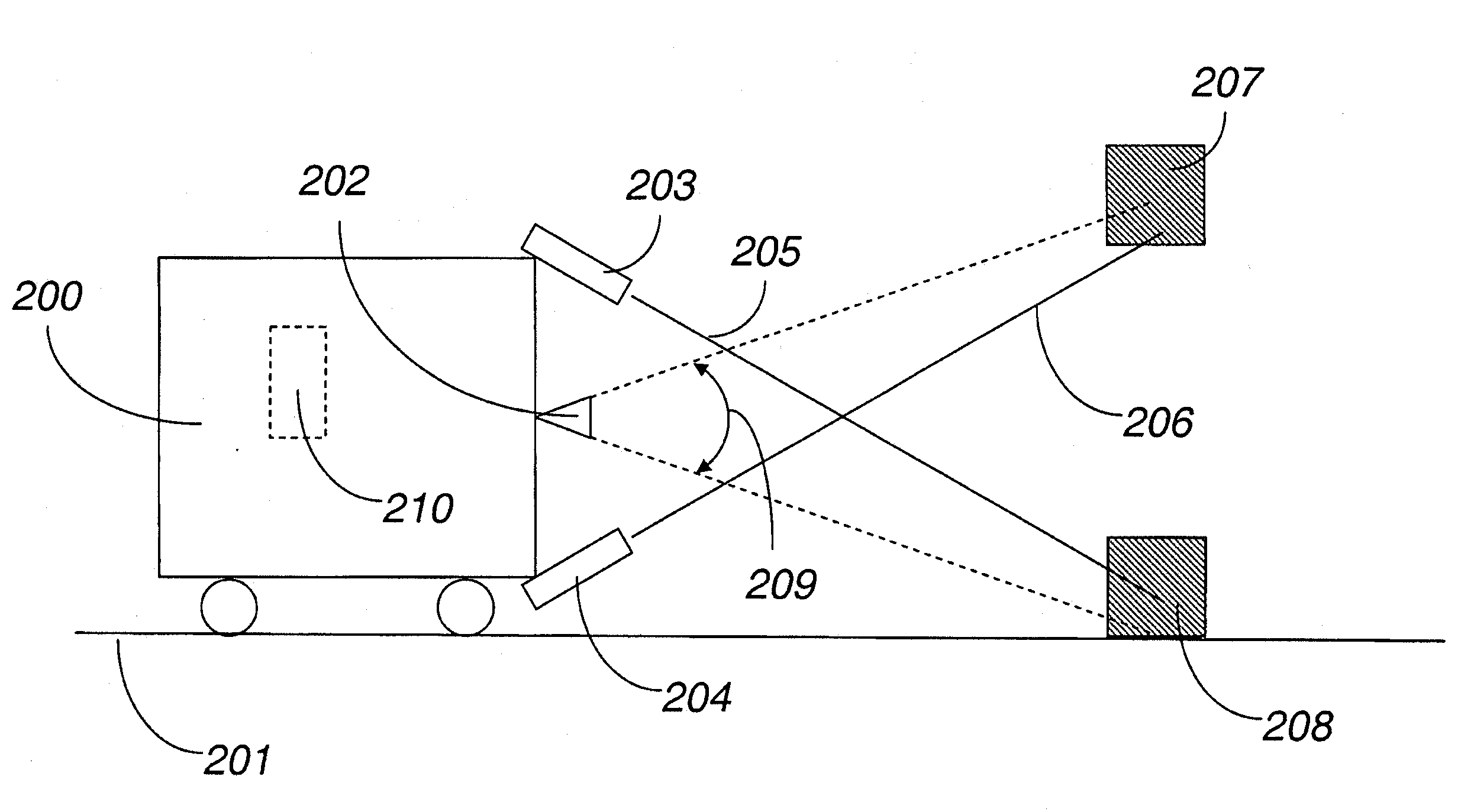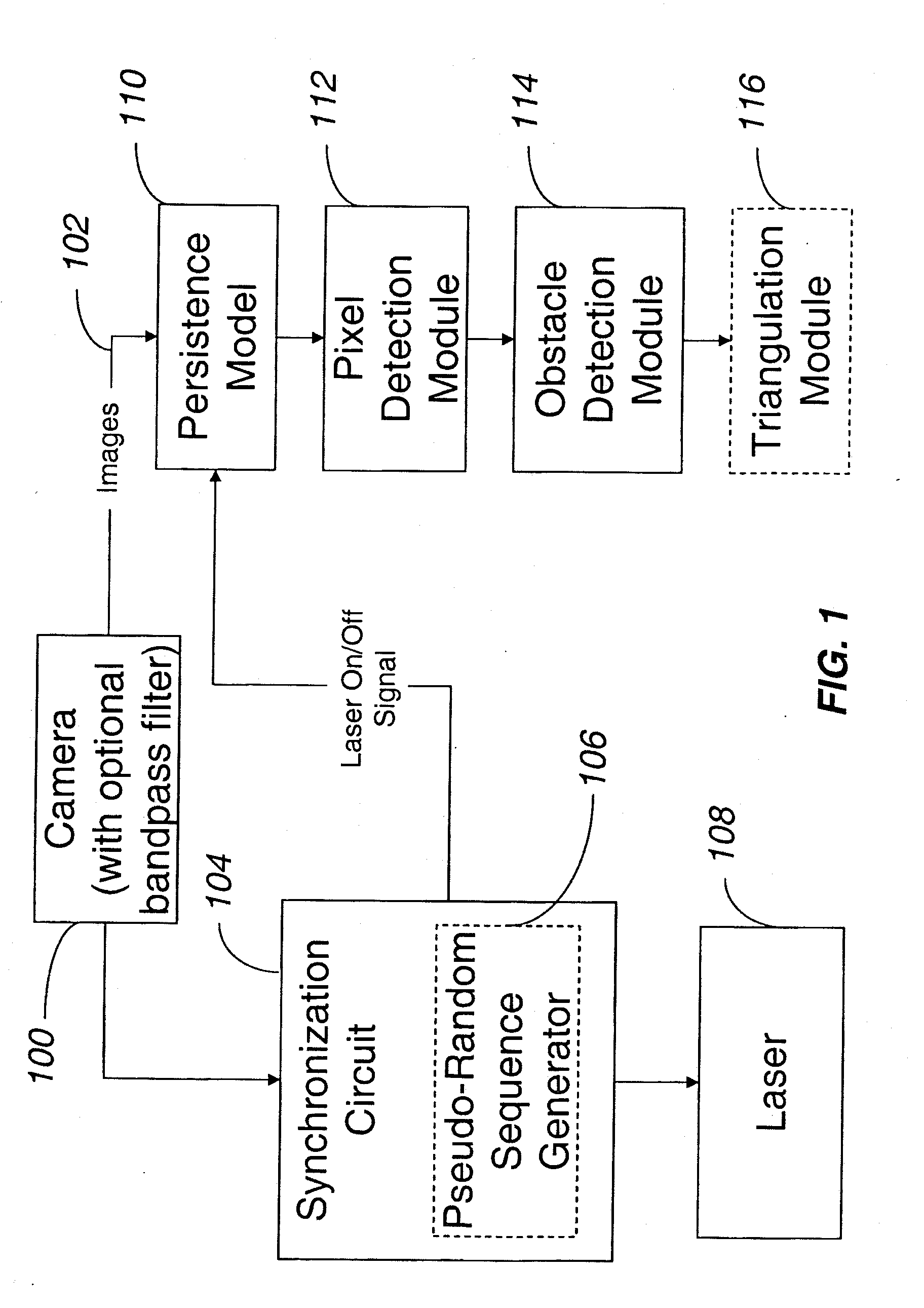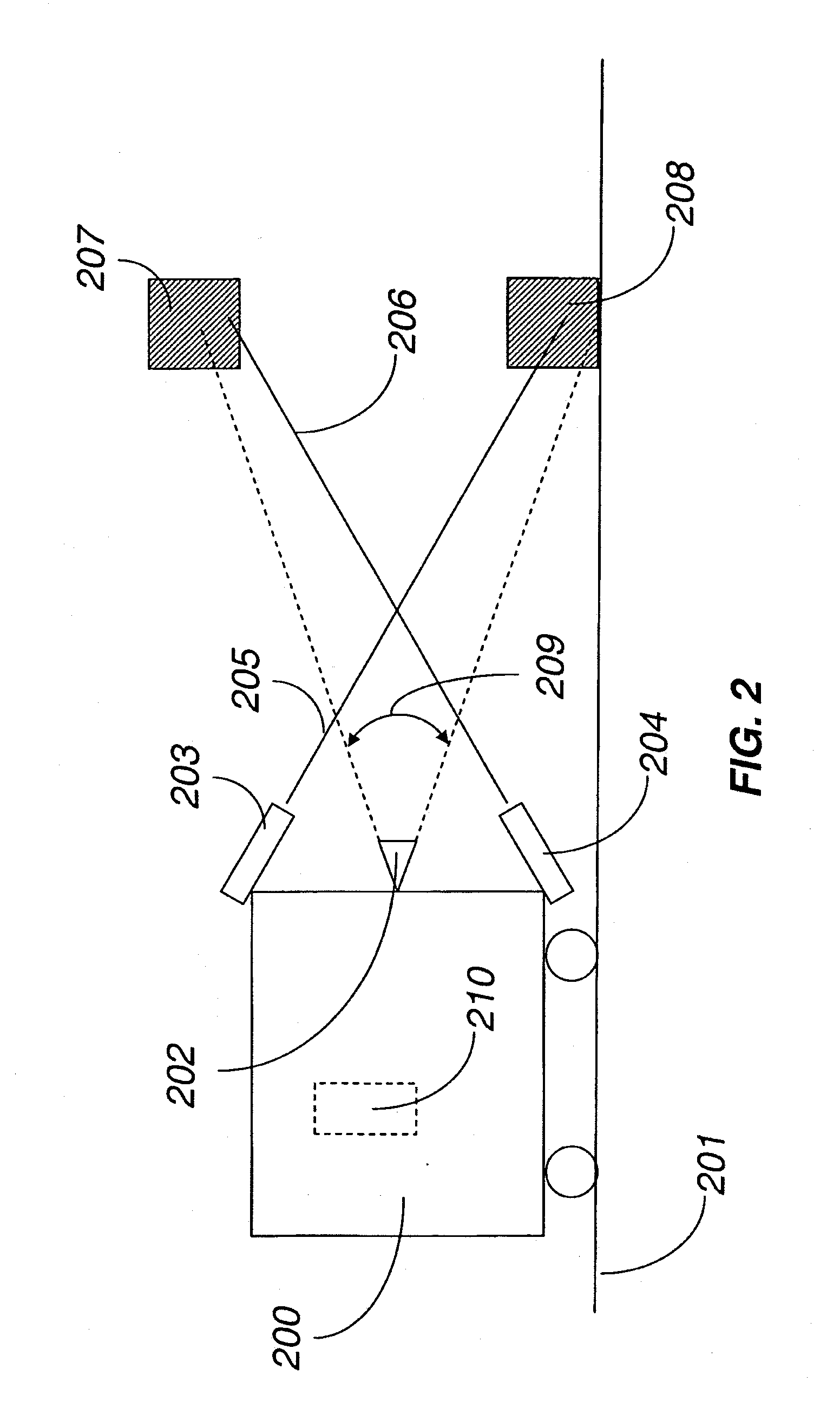Methods and systems for obstacle detection using structured light
a structured light and obstacle detection technology, applied in the field of methods and systems for obstacle detection using structured light, can solve the problems of disadvantage, relatively high cost of devices, and inability of sensors to detect objects,
- Summary
- Abstract
- Description
- Claims
- Application Information
AI Technical Summary
Benefits of technology
Problems solved by technology
Method used
Image
Examples
Embodiment Construction
[0032]FIG. 1 illustrates a block diagram for one embodiment of the invention. The system includes a visual sensor 100 optionally equipped with a narrow bandpass interference filter matching the frequency of the lasers 108. A synchronization circuit 104 receives a synchronization signal from a visual sensor 100 and sequentially pulses a laser 108 on and off. Optionally, the synchronization circuit 104 includes a pseudo-random sequence generator 106. A stream of images 102 acquired from the visual sensor 100 is sent to a persistence model module 110, which combines the information from the stream of images 102. A pixel detection module 112 determines which pixels in the images 102 are illuminated by light from the laser 108, namely the light reflected from the path of the robot. An obstacle detection module 114 then decides whether the illuminated pixels correspond to one or more obstacles or do not correspond to an obstacle. For example, in one embodiment, if the obstacle detection m...
PUM
 Login to View More
Login to View More Abstract
Description
Claims
Application Information
 Login to View More
Login to View More - R&D
- Intellectual Property
- Life Sciences
- Materials
- Tech Scout
- Unparalleled Data Quality
- Higher Quality Content
- 60% Fewer Hallucinations
Browse by: Latest US Patents, China's latest patents, Technical Efficacy Thesaurus, Application Domain, Technology Topic, Popular Technical Reports.
© 2025 PatSnap. All rights reserved.Legal|Privacy policy|Modern Slavery Act Transparency Statement|Sitemap|About US| Contact US: help@patsnap.com



